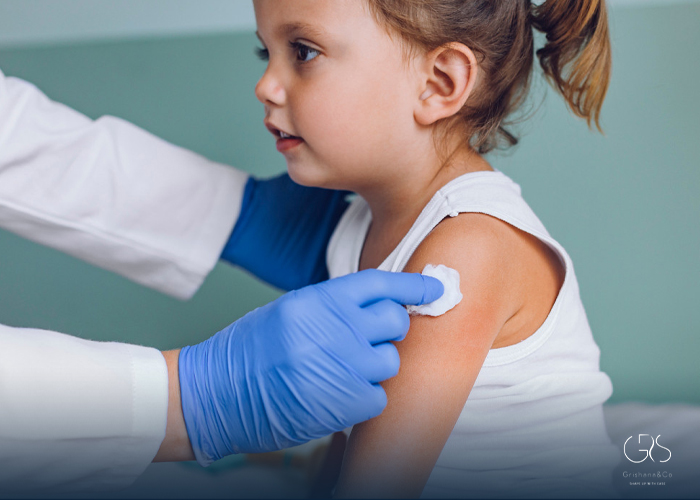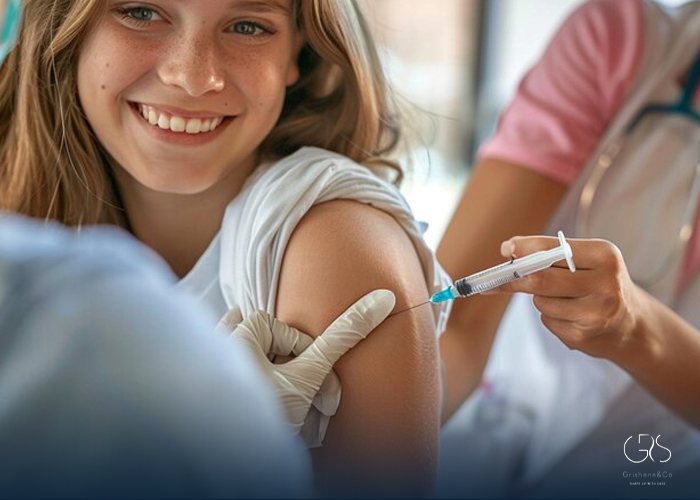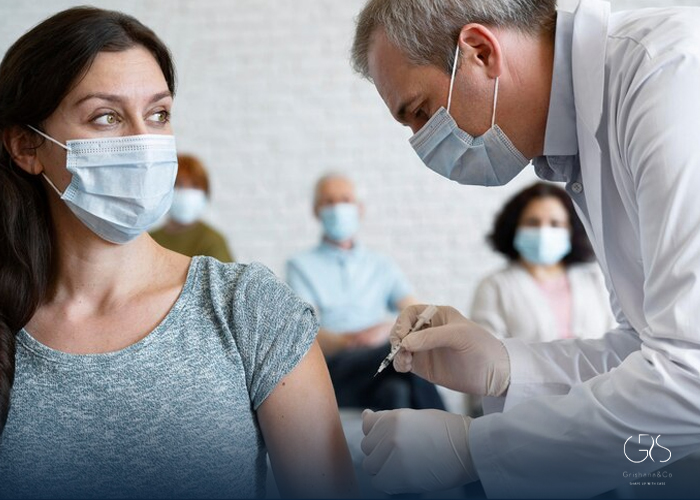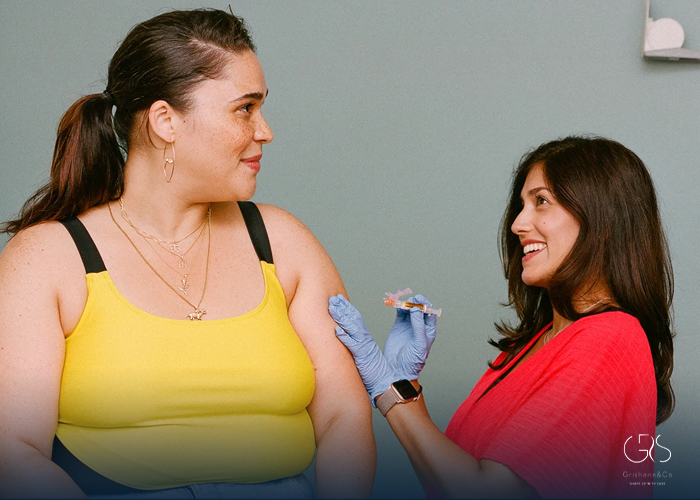Human papillomavirus (HPV) is one of the most prevalent sexually transmitted infections globally. It can lead to a range of malignancies, including cervical, anal, vaginal, vulvar, penile, and oropharyngeal cancers. Vaccination against HPV is therefore a cornerstone of modern preventive medicine.
To achieve maximum benefit, it is crucial to follow the HPV vaccine schedule and dosing recommendations carefully, as these determine the duration and strength of immune protection.
This article presents a comprehensive, scientifically accurate explanation of the HPV vaccine schedule, covering two-dose and three-dose regimens, single-dose evidence, and specific guidelines for special populations.
Why the HPV Vaccine Schedule Matters
The timing and number of doses directly influence the immune response. When the vaccine is administered before exposure to HPV—typically before the onset of sexual activity—it produces a stronger, more durable antibody response. Proper spacing between doses ensures long-lasting protection, while premature or missed doses may weaken immunity.
Global and national health organizations, including the World Health Organization (WHO) and the U.S. Centers for Disease Control and Prevention (CDC), regularly review data and update guidelines. The WHO has recently recognized a one-dose option in certain cases, though most countries still follow the two- or three-dose approach.

Standard HPV Vaccine Schedule and Dosing
1. Two-Dose vs. Three-Dose Regimens
The number of doses depends primarily on the recipient’s age at initiation and immune status:
- Two-Dose Schedule: Recommended for healthy adolescents who begin vaccination before their 15th birthday. The doses are spaced 6–12 months apart, with a minimum of 5 months between them.
- Three-Dose Schedule: Recommended for individuals who start vaccination on or after their 15th birthday, or for immunocompromised persons at any age. The schedule is 0, 1–2, and 6 months.
- If the second dose in a two-dose series is given too early (less than five months after the first), a third dose is required.
- If any dose in a three-dose regimen is given earlier than the minimum interval, it must be repeated following the proper timeline.
2. Recommended Schedule by Age Group
Ages 9–14 (Before 15th Birthday)
- Standard: Two doses at 0 and 6–12 months.
- Minimum interval: Five months between doses.
- If the second dose is administered too early, a third dose is required.
Clinical studies confirm that antibody levels achieved with two doses in this group are equivalent to those from three doses in older individuals.
Ages 15–26
- Standard: Three doses at 0, 1–2, and 6 months.
- Minimum intervals:
- 4 weeks between doses 1 and 2
- 12 weeks between doses 2 and 3
- 5 months between doses 1 and 3
This schedule also applies to people with immune compromise, regardless of age.
Ages 27–45
- Vaccination is not routinely recommended for everyone in this group because most have already been exposed to HPV.
- However, through shared clinical decision-making, some adults may still benefit.
- If chosen, the standard three-dose (0, 1–2, 6 months) schedule applies.
Emerging Evidence: Single-Dose HPV Vaccine
Recent research has explored whether a single dose might provide protection equivalent to multiple doses. This would simplify immunization logistics and increase global vaccine coverage.
In 2022, WHO updated its position to allow a single-dose schedule for girls aged 9–20 and a two-dose regimen for older women, based on growing evidence from trials and population studies. A WHO-prequalified vaccine (Cecolin®) has since been approved for single-dose use.
Preliminary data show that one dose produces a strong and durable antibody response, maintaining protection for at least several years. However, many countries continue to recommend two or three doses until long-term evidence confirms lifelong efficacy.

Detailed Dosing Guidelines and Practical Considerations
Vaccine Products
All licensed HPV vaccines—bivalent, quadrivalent, and nonavalent—have strong safety profiles. They protect primarily against HPV types 16 and 18, which cause the majority of HPV-related cancers. The 9-valent vaccine provides additional protection against types 31, 33, 45, 52, and 58.
Administration Guidelines
- Route: Intramuscular injection in the deltoid area.
- Co-administration: Can be given with other vaccines such as Tdap or meningococcal vaccines at separate injection sites.
- Grace period: A dose administered up to 4 days earlier than the minimum interval is considered valid.
- Interrupted schedules: Do not restart the series; simply continue from where it was left off.
Special Populations
Immunocompromised Individuals
- Should receive three doses, regardless of age.
- Additional monitoring or booster considerations may apply in some cases.
Partially Vaccinated or Previously Exposed Individuals
- The vaccine does not treat existing HPV infections but prevents new ones.
- Incomplete vaccination series should be completed, not restarted.
Adults Aged 27–45
- Benefit from vaccination is limited but may still exist, especially for individuals at risk of new HPV exposure.
- Use shared clinical decision-making with healthcare providers to assess value.
Evidence, Duration of Protection, and Safety
Immunogenicity and Efficacy
Clinical trials show that three doses in HPV-naïve individuals prevent persistent infection and precancerous lesions. Two-dose schedules in younger adolescents generate equivalent antibody levels, confirming that fewer doses can be effective if timed correctly.
Observational studies demonstrate sustained protection for over a decade, and early single-dose studies indicate promising long-term immunity.
Duration of Protection
Research indicates that antibody levels remain far above natural infection levels for at least 10 years post-vaccination. No booster doses are currently required, although ongoing monitoring will determine if future boosters become necessary.
Safety Profile
HPV vaccines are noninfectious and do not contain live virus. Adverse effects are typically mild and short-term, including injection-site pain, redness, headache, or fatigue.
Fainting can occur in adolescents shortly after vaccination, so patients should be observed for 15 minutes post-injection.
Large studies confirm that HPV vaccines are safe, with no consistent association with serious adverse events.
Implementation and Programmatic Considerations
National Policy and Adoption
Countries design their HPV vaccine schedule based on local needs, vaccine supply, and public health infrastructure. Low- and middle-income nations may benefit most from simplified single-dose strategies, reducing costs and logistical challenges.
However, successful implementation requires strong political commitment, effective communication, and reliable surveillance systems to monitor long-term outcomes.
Coverage and Timing
- Timely completion of all doses is critical for full protection.
- Missed doses should be administered as soon as possible without restarting the series.
- Most programs aim to vaccinate between ages 9 and 14, before sexual activity begins.
- School-based vaccination has proven highly effective in increasing coverage rates.
Monitoring, Surveillance, and Booster Policy
Post-marketing surveillance continues to ensure long-term vaccine effectiveness and safety. If evidence of waning immunity arises, booster recommendations may evolve.
Equity and Access
Simplified dosing schedules improve access and affordability, especially in underserved regions. Including both girls and boys in vaccination campaigns enhances herd immunity and reduces HPV transmission.
Practical Tips for Clinicians and Patients
- Start early: Initiate vaccination between ages 9–12 for optimal immune response.
- Maintain spacing: Follow the exact intervals—6–12 months apart for two doses, or 0, 1–2, and 6 months for three doses.
- Don’t restart: Continue missed schedules without starting over.
- Educate patients: Explain that the vaccine prevents new infections, not existing ones.
- Observe safety: Monitor patients for 15 minutes after injection to prevent injury from fainting.
- Stay informed: Healthcare providers should stay updated on evolving guidelines and local policy changes.
- Encourage adult discussion: For ages 27–45, decisions should be personalized based on risk and prior exposure.
Conclusion
Following the correct HPV vaccine schedule ensures strong, durable protection against HPV infections and related cancers. For most adolescents starting before age 15, a two-dose regimen (0, 6–12 months) provides robust immunity. Older individuals or those with compromised immunity require a three-dose series (0, 1–2, 6 months).
New evidence supporting a single-dose option shows promise for expanding global vaccine coverage, though broader adoption awaits longer-term confirmation.
HPV vaccination remains one of the most powerful tools in modern medicine to prevent cancer, reduce HPV transmission, and improve global health outcomes.







